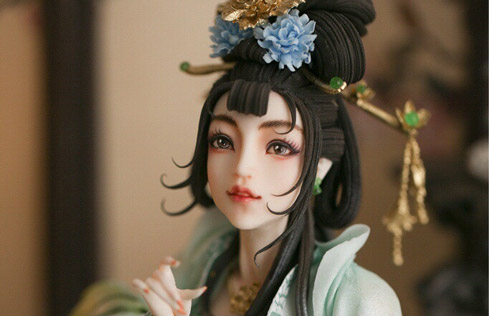More work needed to preserve Chinese world heritage
After over 20 years development, China now has 40 world heritage sites in total, among which 28 are cultural heritage sites, 8 are natural heritage sites and 4 are both cultural and natural heritage sites. China ranks 3rd in the world for its amount of world heritage. None of these world heritage sites of China has been put on the endangered list or removed from the world heritage list. This doesn’t mean that China has been doing a good job protecting those heritage sites. There are still many things that need improving.
|
|
|
China Danxia Landform was listed into the World Heritage by the World Heritage Committee at its 34th meeting held in Brasilia, capital of Brazil on August 1. |
How many world heritage sites a country owns can reflect how much intelligent contribution it and its people have made to world history. From this perspective, it’s the mission of the Chinese government and every Chinese citizen to promote the longevity of every world heritage site scattered around China.
In 1994, approved by Chinese government, the UNESCO sent a group of experts to China to make an on-the-spot investigation on the Great Wall, the Forbidden City, Peking Man Site at Zhoukoudian, Qin Shi Huang's Buried Sculpture Legion and Mo Kao Grotto at Dunhuang which were the first five heritage sites of China being put on the world heritage list in 1987. Through continuous test and professional investigation later, the UNESCO firmly approved China’s heritage protection. In 2006, the Ministry of Culture published the Administrative Measures for the Protection of World Cultural Heritage. Since then, China has begun to implement the monitoring and inspection system. World cultural heritage sites which are damaged in terms of value, authenticity and wholeness due to improper use will be put on the caution list and made public. In December 2006, the State Bureau of Cultural Relics of China defined the procedures, responsibilities and contents of the monitoring system for world cultural heritage protection.
During the 31st World Heritage Convention held in 2007, ancient town of Lijiang attracted the world heritage committee’s attention and inquiries, the experts doubted that whether Lijiang could deal with the pressure of social development and overdevelopment. Over the ten years since Lijiang has been listed as world cultural heritage in 1997, the amount of the Naxi minority people reduced from about 40,000 to several thousands. Most of them moved out of the town. Instead, tens of thousands of tourists went there every day. The town has become a busy shopping center full of bars.
What kind of heritage will be put on the endangered list? One kind is the heritage having lost its authenticity and wholeness. The other kind is heritage whose surrounding environments have been damaged. In China, there are many heritage sites are over commercialized due to regional economy development. Predatory development and destructive construction both can damage heritage sites’ wholeness.
China has established monitoring systems at both national level and provincial level and also in heritage sites. For example, the Yungang Grottoes at Datong City, listed as world heritage in 2004 has been suffering from air pollution, acid rain, coal ashes and discharges of life, and in 2009, Datong City has invested RMB 0.56 billion to improve its ambient environment. However, the artificial lake, the business street constructed in the style of the ancients, and the square all lie within the protection area of the Yungang Grottoes and do a lot of damage to its authenticity. The State Bureau of Cultural Relics has sent investigation teams to Datong several times, and also has held survey and treatment meetings with related cultural relic experts aiming to deal with those problems.
Applying for world heritage is a choice, but not the only choice. At the end of 2001, the World Heritage Committee has decided that the total amount of heritage approved as world heritage every year is 30, and each country should only have one heritage that approved. Then in 2004, during the 28th World Heritage Committee held in Suzhou City, China, the total amount has increased from 30 to 45 and each county could apply two heritage sites for world heritage (at least one is natural heritage) every year. During the 30th World Heritage Committee, there were 30 candidate heritage sites from 30 countries, but only 13 heritage sites applied by 14 countries have become world heritage sites. The number of heritage sites announced by the State Bureau of Cultural Relics has decreased from 60 to 35. There are still 32 are waiting in line. Even if things go well, the last one can finally become a world heritage till the middle of the 21st century.
We believe that China has far more than 38 heritage sites which can be listed as world heritage. There are many heritage sites on the waiting list count. Once a heritage is put on the waiting list, it should be arranged according to the standards of the World Heritage Committee. The arrangements include the repair and renovation of the heritage and its ambient environments, the establishment of related organizations, general plans and the emphasis on its key values.
Cultural routes are the hot spots of applying for world heritage. But the protection of these heritage sites in China isn’t good. Taking the Grand Canal as example, one problem is the whole condition is not clear. Many heritage sites have disappeared over the changes of history. Another problem is that the protection system is imperfect. The Grand Canal, functioning as an important water passage, is managed by local water transport or traffic departments. People only pay attention to the increase of shipments quantity and care less about the preserve of canal culture. The third one is the disorderly development. Many cities along the Grand Canal have developed real estates borrowing its brand, destroyed its original styles, and greatly damaged its history and culture symbols. Measures should be taken quickly and effectively in order to ensure the Grand Canal to become a world heritage in 2014.
In June 2009, Wutai Mountain has become a world heritage. Zheng Bingxiu, the deputy director of the Wutai Mountain Administrative Bureau has experienced that moment personally. He said: “More than a half of China’s heritage sites lie within scenic spots and tourism development is inevitable. In the past, the most obvious and direct change brought by applying for world heritage is economic profits, which now has become a restraint. Developments aiming at quick success and instant benefits are placed by sustainable developments. Building a brand is a long term mission.”
China has ranked the third only after Spain and Italy in terms of world heritage. In some sense, we are moving into the post-heritage period, emphasizing more on management than on apply. Foreign countries talk more about protection and less or no about utilization. While according to China’s experience, we aim both at protection and utilization. That is the so called “fully protection and proper utilization” which is very difficult to carry out.
At present, there is not a unified world heritage management department in China. The Forbidden City is managed by the state, the Summer Place is managed by Beijing City, and the Kong Family Mansion, Confucius Temple and Kong Cemetery are managed by Qufu, Ji’ning City of Shandong Province. Local governments at different levels can function as a supervisor, a manager and a beneficiary. This leads to the imbalance of power and poor managementThe present systems can not change within a short period, we should reinforce legislation to improve current situation. Removing heritage from the world heritage list or putting it on the endangered list is just a punishment or damage to the heritage itself leaving those who destroy heritage sites at large. Heritage sites are non-renewable. Any damage could make them in unfavorable situations.
There is a symbol for World Heritage, with a circle on the outside and a rhombus inside the circle. The circle symbolizes nature and the rhombus symbolizes the creations of human being. The two figures combined symbolize a perfect integration of nature and human being.
Once a western scholar said that, “Sooner or later, you will have what we have today; while what you have, we will never have.” Therefore, we should all make efforts to promote the longevity of the world heritage sites scattering in China. It’s the mission of the governments and every Chinese citizen.
Translated by?Chen Yanqiu























